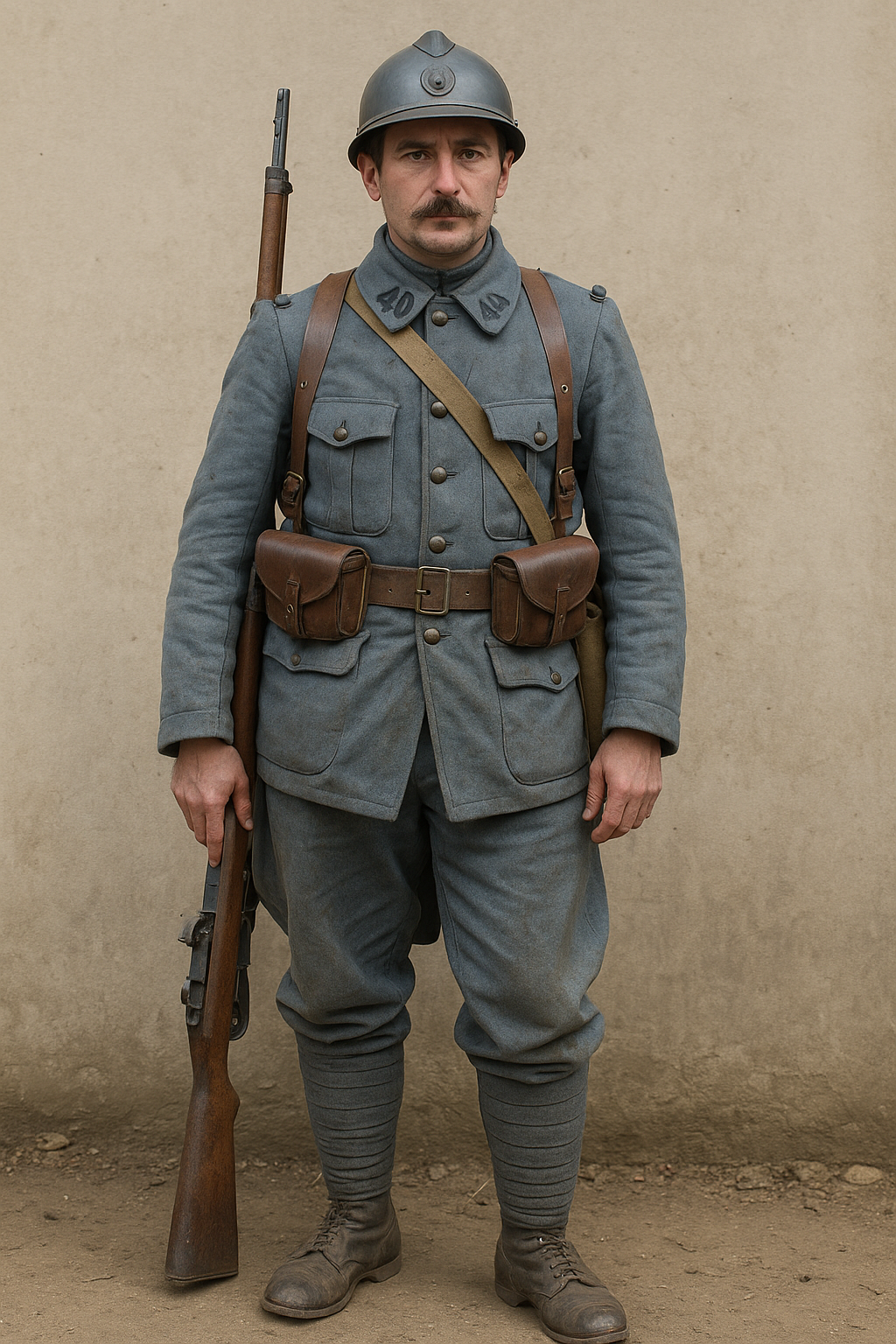
French WW1 Uniforms: Evolution, Meaning & How to Collect Them Today
Published on Sep 20, 2025
Introduction: Did You Know That the Bright Blue Uniforms of WW1 France Caused Thousands of Casualties?
At the start of World War I, French soldiers went to battle in vibrant blue coats and red trousers — colors more suited for parade grounds than the trenches. It wasn’t until thousands of men fell in these eye-catching uniforms that the French military rethought its approach to combat clothing.
Why were French WW1 uniforms blue, and how did they evolve during the war? Whether you’re a collector, history buff, or reenactor, understanding these uniforms opens a window into one of the most pivotal eras in modern history. This article will guide you through:
- The evolution of French uniforms in WW1
- Common pitfalls when collecting or replicating them
- Actionable tips for enthusiasts and hobbyists
- Current trends in historical preservation and reenactment
The Origins of the French WW1 Uniform
The French uniform WW1 design at the outbreak of war was based on traditions going back to the Napoleonic era.
Key Characteristics of Early WW1 French Uniforms (1914):
- Bright red trousers (pantalon rouge)
- Prussian blue wool tunics
- Kepis (soft caps) with red bands and blue tops
- Brown leather gear and white gaiters
Why Were French WW1 Uniforms Blue?
The blue color (called “horizon blue”) was both symbolic and practical:
- It paid homage to traditional French military styles.
- It was cheaper and easier to produce than the earlier dark blue.
- But: It still stood out in the muddy, smoke-filled trenches — a clear visibility risk.
Pitfall to avoid: Many collectors confuse early-war red-trousered versions with the post-1915 "horizon blue" types. Knowing the difference is crucial!
From Flashy to Functional: How French WW1 Uniforms Evolved
1915 and Beyond: Enter the ‘Horizon Blue’
As the war dragged on and casualties mounted, practicality won over tradition.
Key Changes Introduced in 1915:
- Color Shift: Soldiers began wearing "horizon blue" — a soft grayish-blue — to better blend with the battlefield.
- Adrian Helmet Introduced: To replace the soft kepi, the Adrian helmet became standard to protect against shrapnel.
- Simplified Design: Uniforms were mass-produced, less tailored, and featured functional pockets and detachable collars.
Material and Construction:
- Wool serge fabric
- Reinforced knees and elbows
- Thick wool greatcoats for cold weather
Actionable Tip: If you're building a replica or collecting, focus on the year. Early 1914 uniforms differ drastically from 1916 models.
Common Pitfalls When Collecting WW1 French Uniforms
Whether you're shopping online, at a militaria fair, or replicating for a reenactment, avoid these beginner mistakes:
1. Confusing Replica with Original
- Originals often show wool wear, moth damage, and specific stitching patterns.
- Replicas may have modern thread, sizing labels, or synthetic blends.
2. Misidentifying Rank and Regiment
- Shoulder straps, collar tabs, and buttons indicate rank and regiment.
- Colors and symbols differ (e.g., red piping for infantry, yellow for cavalry).
3. Overpaying for Incomplete Sets
- A full uniform includes:
- Tunic
- Trousers
- Belt & ammo pouches
- Helmet or kepi
- Puttees and boots
Tip: Use historical reference books or online image archives like Gallica or Musee de l’Armee for verification.
Actionable Steps for Starting Your French WW1 Uniform Collection
Here’s a step-by-step guide if you’re just getting started:
Step 1: Choose a Specific Era or Unit
- Early war (1914): Red trousers & dark blue tunic
- Mid-war (1915–16): Horizon blue, Adrian helmet
- Late war (1917–18): Streamlined versions, standard gear
Step 2: Study Original Photos and Manuals
- Military archives and digitized war records are goldmines.
- Look for details like seam types, insignia, and equipment configuration.
Step 3: Buy From Reputable Dealers
- Join forums like Great War Forum, WW1Talk, or Reddit’s r/Militaria.
- Ask for provenance and clear close-up photos.
Step 4: Store Properly
- Use acid-free tissue paper.
- Keep away from sunlight and humidity.
- Avoid hangers; fold with gentle padding.
Step 5: Network With Other Collectors
- Attend militaria fairs and reenactment events.
- Join local or online historical societies.
Current Trends in WW1 French Uniform Interest
The interest in WW1 French uniforms has surged thanks to:
- Films & Documentaries: Titles like 1917 and They Shall Not Grow Old spark curiosity.
- Centenary Events: 100th anniversary commemorations brought global attention.
- Living History: Reenactment groups now feature more accurate French portrayals, not just British or German.
Modern Uses of French WW1 Uniforms:
- Museum Displays
- Theater & Film Costumes
- Educational Events
- Cosplay & Hobby Crafting
Did You Know? Some collectors mix vintage pieces with high-quality reproductions to balance authenticity with wearability.
French WW1 Uniforms in Reenactment: Practical Tips
- Start with the Adrian helmet — it's affordable and iconic.
- Use reproduction boots unless you want to pay a premium for original leather.
- Make sure your gear matches the rank and regiment you portray.
Conclusion: Why French WW1 Uniforms Still Matter Today
The story of the French WW1 uniform is more than just fabric and buttons. It's about courage, adaptation, and innovation in one of the darkest periods of human history. Whether you're collecting, recreating, or studying, understanding the uniform is a key to understanding the soldier.
From vibrant red to subdued horizon blue, the French army's shift in uniform color tells a story of lessons learned in blood and mud.
